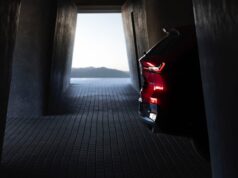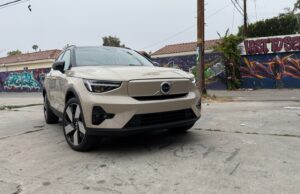We take a road trip down Route 66 in the midwest behind the wheel of the 2013 Ford Fusion Energi plug-in hybrid.
Buyers interested in the 2013 Ford Fusion can choose between five different powertrains, which are all efficient in their own right. The top dog is the Fusion Energi plug-in hybrid, which in addition to having the same hybrid powertrain as the Fusion Hybrid, the Fusion Energi can also travel up to 20 miles in EV mode. Ford invited us out to St. Louis for a weekend with the Fusion Energi, which would see us traveling down the infamous Route 66 with the trip concluding in Tulsa, Oklahoma. After 400 miles in the midwest behind the wheel of the 2013 Fusion Energi we walked away mostly impressed with Ford’s plug-in hybrid midsize sedan.

The 2013 Ford Fusion offers three four-cylinder powertrains, in addition to the Fusion Hybrid and Fusion Energi plug-in hybrid. The Fusion Energi plug-in hybrid is powered by a 2.0L Atkinson-cycle four-cylinder engine and an electric motor with a combined 185 horsepower. In full EV mode the Fusion Energi can travel up to 21 miles before its four-cylinder engine kicks in. The Fusion Energi has three selectable EV modes: EV Now, EV Auto and EV Later. One of the features we loved was the ability to tell the system to reserve the EV power, meaning that the system can reserve it for specific parts of your route, like on city streets.
Although the Fusion Energi can only travel up to 21 miles in EV mode, Ford positioned charging points at various points during our route so that we could travel in EV mode as much as possible. Once the battery is depleted the Fusion Energi turns into a standard hybrid model, which gets rid of any of those range anxiety concerns drivers feel with standard electric vehicles like the Focus Electric or Nissan Leaf. Ford says that the Fusion Energi has a total driving range of 620 miles when you combine the battery-only and hybrid driving ranges. We didn’t have to stop for gas once during our roadtrip.
One of the other best parts about the Fusion Energi is that you get the same stylish exterior and interior as the other Fusion models. Most people will be hard pressed to tell the difference with the exception of the charging point on the front fender. There also aren’t any penalties to pay with the interior. The Fusion Energi’s interior is just as spacious as the other versions, but of course there is one draw back. Ford had to store the larger lithium-ion battery somewhere, which means the trunk space is much smaller than the other Fusions. The standard Fusion has 16.0 cu-ft. of space, but this drops to 12.0 cu-ft. in the Fusion Hybrid and 8.2 cu-ft. in the Fusion Energi. We were able to fit a weekend’s worth of carry-on luggage, but if you need more than that you will have a problem.
So how did it drive? The Fusion Energi’s acceleration in either EV or hybrid modes was strong especially considering that it weighs almost 4,000 pounds. Throughout the city it had more than enough power to accelerate away from a stop light and to keep up with traffic. At higher speeds on the highway the Fusion Energi was able to keep up with everyone else on the road. We only had two passengers on board, which means with the added weight from five people and luggage on board it may take a bit longer to get up to speed.
The Fusion Energi’s suspension and steering were on par with the other Fusion models we’ve driven, with the only noticeable differences being that the car felt a bit heavier, which is due to the larger lithium-ion battery in the trunk. It’s regenerative braking system was very smooth and the Brake Coach feature is a great way to see how your braking can increase your overall range.
Throughout the trip the Fusion Energi was an easy car to live with. The compromises remained small and the 21 mile EV range would be perfect for anyone that has short a commute. Ford estimates that it will take as little as 2.5 hours to recharge the Fusion Energi’s battery using a 240-volt charger, while it will take around seven hours on a 110-volt household outlet. After 400 miles we averaged 38 mpg, which is a bit lower than Ford’s estimate of 44/41 mpg. In the next few years the market will become more saturated with plug-in hybrid models, but right now the closest competitor to the Fusion Energi, is the Accord Plug-in hybrid. Compared to the Accord PHEV, the Fusion Energi has a longer EV driving range, but the Accord PHEV can be recharged much faster in as little as an hour with a 240-volt outlet.
2013 Ford Fusion Energi SE
Base Price: $39,495
Price as Tested: $40,585














